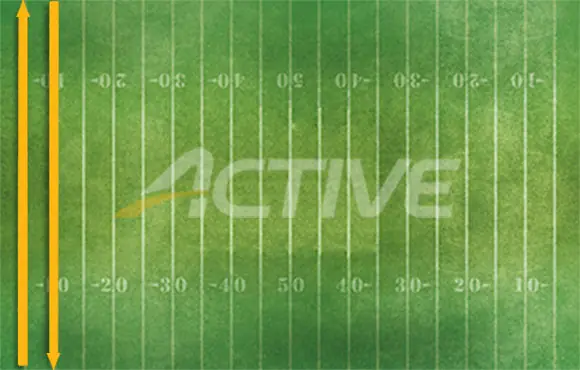If you’re a runner, chances are the half marathon distance is on your radar. According to the annual half marathon report compiled by Running USA, nearly 2 million runners finished a 13.1-mile race in 2015. The distance is popular for good reason: It’s long enough to feel like a major accomplishment, but the training isn’t as time-consuming as a full marathon.
If you think you’re ready to tackle a half marathon, this step-by-step guide will help you prepare like a seasoned veteran.
Plan It Out
1 of 7
So, you've made the decision to train for a half. Now, where to begin? Before you give up your hard-earned cash for a registration fee, think about what kind of race you're looking for. Do you thrive on big city crowds? Or do you run best in low-key (and low-pressure) situations? Do you want to run a completely flat course? Or would you take challenging terrain if it meant beautiful scenery? Once you figure out your ideal race, do a little research. What's the usual race day weather? Will you be able to roll out of bed or will you need to be at the start line hours in advance? With some advance prep, you'll be able to tailor your training plan to a specific race.
Find a
race.Train Like a Pro
2 of 7
For most runners, a 12-week training plan is an ideal amount of time to prepare. But if you haven't been running regularly, you may need a few more weeks to build up. If you're just looking to finish, focus on the long run. You'll want to complete at least a few double-digit runs before race day. If you're a half marathon veteran, try adding in some faster running. A tried and true workout to prepare for 13.1 miles is the long tempo run. Warm-up for 1 to 2 miles, then run 3 to 5 miles at goal half marathon pace. Cool down with a mile of easy jogging. You can run the long tempo workout every other week during the second half of your training. This workout isn't easy, but practicing race pace is the best way to prepare for a PR.
Find a
race.Race Week Countdown
3 of 7
A week to 10 days out from race day, you should be in taper mode. Your training plan should include a reduction in mileage, so use that extra time to catch up on sleep and rest your legs. Assuming your race is on the weekend, some runners might choose to run a few miles at race pace mid-week, but avoid workouts that might leave you feeling exhausted or sore. At this point, the work has been done. Now is the time to revive tired legs and get pumped for the race!
Find a
race.Night Before Prep
4 of 7
If you're too nervous to sleep well, don't fret. Many runners swear that it's the night before the night before the race that really counts. As long as you're regularly logging quality shut-eye, one night of tossing and turning won't derail your race. Choose a dinner that you've tested out and know sits well. Think low fiber and high in carbohydrates. Lay out everything you'll need the next morning—don't forget the little things like safety pins for your bib, a fully charged GPS watch (if you usually run with one), the fuel you're planning on using and warm clothes for before and after the race.
Find a
race.How to Handle Race Day Morning
5 of 7
Race day has arrived! Since you set two alarms (you did set two alarms, right?), you're awake with plenty of time to eat a tried and true breakfast and get to the starting line on time. If you're too nervous to eat much, stay hydrated and eat something bland; try a cup of dry cereal or a piece of toast with jam. Once you arrive at the starting line, loosen up your legs by jogging for a mile or so. If you're gunning for a PR, try doing some quick strides about 10 minutes before the race begins.
Find a
race.After the Gun Goes Off
6 of 7
As the race begins, focus on staying controlled. The pace should feel very easy for the first miles. It's easy to let starting line adrenaline take over, but the best way to pace a half is to start slower than your goal pace and gradually speed up. If the race is crowded at the start, don't waste energy weaving; it's better to stay relaxed and wait for the course to thin out a bit. Don't forget to hydrate and fuel just as you practiced during your training. Most importantly, enjoy yourself! You'll be triumphantly crossing the finish line before you know it.
Find a
race.About the Author

Get ACTIVE on the Go


13.one Half Marathon
Get expert advice and guidance as you progress in your journey to becoming an avid runner.
Available for iOS






Discuss This Article